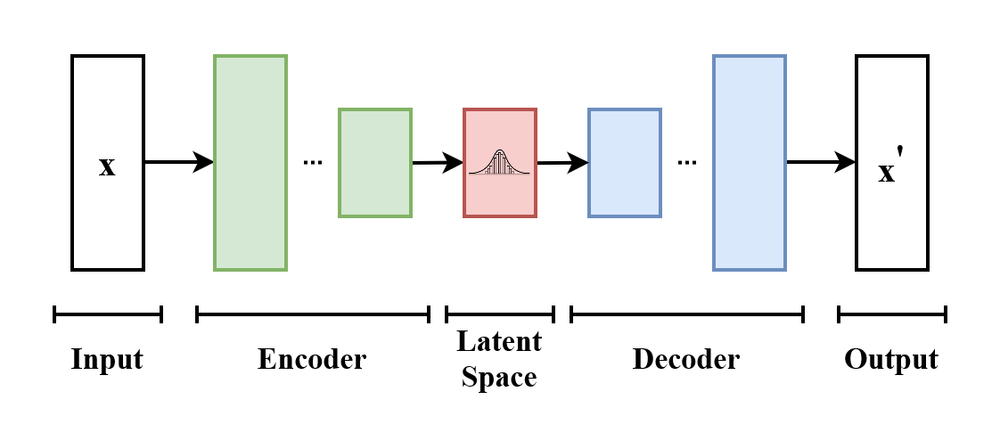Variational Autoencoder • VAE
A Variational Autoencoder (VAE) is a type of artificial neural network used in the field of machine learning for the purpose of generating new data.


A Variational Autoencoder (VAE) is a type of artificial neural network used in the field of machine learning for the purpose of generating new data. It's a type of autoencoder, a neural network used for learning efficient codings of input data.
While a traditional autoencoder learns to compress data from the input layer into a short code, and then uncompress that code into the original data, a VAE turns the problem around. Instead of producing a single output (the compressed code), the VAE produces a statistical distribution of possible outputs. It then samples from this distribution to generate new data.
Here's a simplified explanation of how VAE works:
Encoder: First, an encoder network turns the input data into two parameters in a latent space of representations.
Random Sampling: We randomly sample similar points from the latent normal distribution that is assumed to generate the data.
Decoder: Finally, a decoder network maps these random samples back to the original input data.
The parameters of the VAE are trained via two loss functions: a reconstruction loss that pushes the decoded samples to match the initial inputs, and a regularization loss, which helps learn well-formed latent spaces and reduce overfitting to the training data. The end result is a model that can generate new data that looks like the data it was trained on.
VAEs have been applied in a variety of applications such as generating human faces, handwriting styles, digital art, and more.
The basic scheme of a variational autoencoder. The model receives x as input. The encoder compresses it into the latent space. The decoder receives as input the information sampled from the latent space and produces x’ as similar as possible to x.

Videos to learn more about VAEs
VAEs are typically of higher interest in China and interest levels have been pretty steady for the past 20+ years.
Articles about VAEs
Sources















































